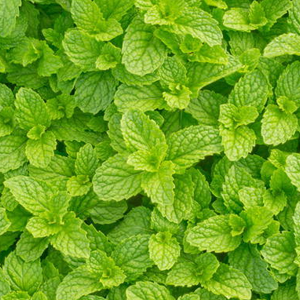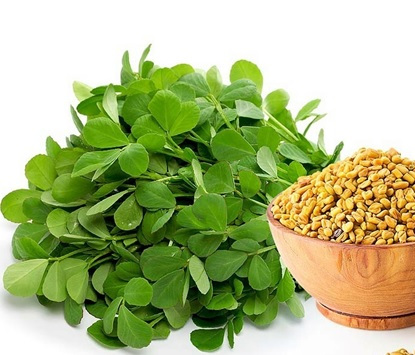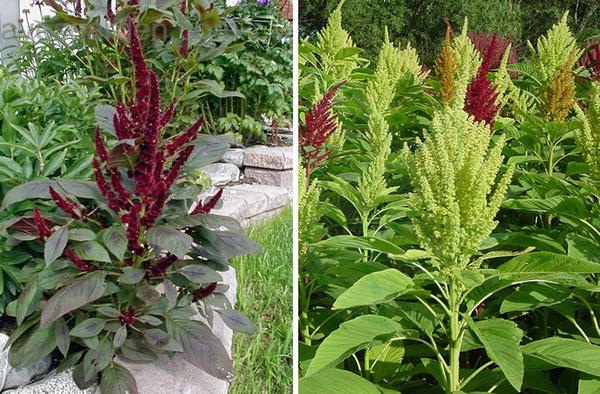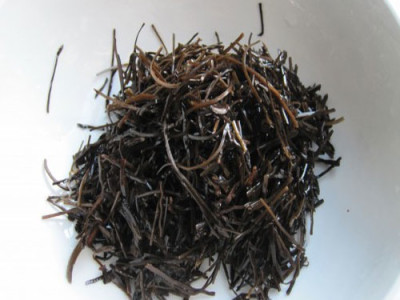

Green Leafy Veggies For Summer
Green Leafy Veggies For Summer
Spinach
Spinach is a leafy, green vegetable that belongs to the family of hardy, leafy greens known as Amaranthaceae. Spinach is an excellent source of minerals, vitamins, and dietary fiber, and is a low-calorie food. It is loaded with many essential nutrients, including folate, vitamin A, vitamin K, vitamin C, magnesium, iron, and calcium. Spinach has a mild, slightly sweet flavor, and is often added to salads, smoothies, sandwiches, and stir-fries for a nutritious boost. Spinach is a rich source of antioxidants like beta-carotene, lutein, and zeaxanthin, which may help protect against cell damage, cancer, and other diseases. It is also a great source of dietary fiber, which helps regulate digestion, and may reduce the risk of heart disease. Spinach is also a good source of omega-3 fatty acids, which can help reduce inflammation and improve heart health.
Spinach is also high in potassium, which helps reduce blood pressure and improve heart health. It is also a good source of iron, which is essential for blood health and for preventing anemia. Spinach also contains proteins and amino acids, which are essential for muscle and tissue growth and repair. In addition to its nutritional benefits, spinach is also a very versatile vegetable. It can be used fresh in salads, cooked in stir-fries or soups, or even baked into dishes like quiches and frittatas. Spinach is also a great addition to smoothies and juices, as it adds a mild, sweet flavor and a nutritious boost.
- Gather your spinach seeds based on the season (For a summer harvest, try New Zealand Spinach or Malabar Spinach are two leafy greens that are more heat tolerant that are similar to common spinach.)
- For proper shoot up, soil should not be warmer than 70ºF (21°C). Common spinach cannot grow in midsummer.
- Select a planting site with full sun (or partial sun, at least) and well-drained soil .
- Plant spinach seed ½ inch deep. Cover seed lightly with soil. Refrigerate seeds 1 week before sowing to help shoot up.
- Plant spinach seeds an inch apart in rows 14-18 inches apart and cover the seeds with a 1/2 inch of soil. Plant grown simultaneously every 10 to 14 days.
Benefits of Spinach
It is higher in iron, calcium, and vitamins than most cultivated greens, and one of the best sources of vitamins A, B, and C.Spinach is one of the most nutrient–dense foods on the planet, offering numerous health benefits. It is packed with vitamins, minerals, antioxidants, and fiber, making it an ideal food for promoting overall health and wellness
- Promotes Heart Health: Spinach is high in potassium, magnesium, and folate, all of which help to reduce the risk of heart disease. Potassium helps to reduce blood pressure, while magnesium helps to reduce the risk of stroke and other cardiovascular problems. Folate helps to reduce cholesterol levels and can help to reduce the risk of certain types of cancer.
- Improves Brain Function: Spinach is high in lutein and zeaxanthin, two carotenoids that have been linked to improved cognitive function and memory. These carotenoids are known to protect the brain from oxidative stress and can help to reduce the risk of age-related cognitive decline.
- Boosts Immunity: Spinach is high in vitamin C, which is essential for a healthy immune system. Vitamin C helps to boost the production of white blood cells, which are vital for fighting off infections and diseases.
- Supports Eye Health: Spinach is full of carotenoids, which are powerful antioxidants that can help to protect the eyes from damage caused by free radicals. Carotenoids are also known to reduce the risk of age-related macular degeneration, cataracts, and other vision problems.
- Promotes Bone Health: Spinach is high in calcium and vitamin K, both of which are essential for maintaining healthy bones. Calcium helps to strengthen bones and can help to reduce the risk of osteoporosis, while vitamin K helps to promote bone mineral density.
- Aids Digestion: Spinach is high in fiber, which helps to keep the digestive system functioning properly. Fiber helps to keep the digestive tract healthy and can help to reduce the risk of digestive problems such as constipation and irritable bowel syndrome.
- Enhances Skin Health: Spinach is high in vitamin A, which is essential for keeping skin healthy and youthful. Vitamin A helps to keep skin hydrated and can help to reduce the signs of aging, such as wrinkles and sun damage.
Fenugreek
Fenugreek is a plant that has been used for centuries for its medicinal and culinary properties. It is native to the Mediterranean region, and its seeds and leaves are commonly used in cooking and baking, as well as herbal remedies. The scientific name for fenugreek is Trigonella foenum-graecum. Fenugreek is a small, bushy, annual herb that grows up to two feet tall and has light green, trifoliate leaves. The leaves have a mild, bitter taste and smell like maple syrup when dried. The seeds are light yellow-brown and have a pungent flavor. The plant blooms in the summer and produces yellow flowers that turn into tiny, oblong seed pods. Fenugreek is prized for its health benefits, which include the ability to lower blood sugar levels, reduce cholesterol, and aid in digestion. It is also believed to have anti-inflammatory and pain-relieving properties, and can be used to treat skin conditions such as psoriasis, eczema, and acne.
The seeds are also used as a remedy for sore throat, cough, and bronchitis. Fenugreek is used in traditional Indian dishes and is a common ingredient in curries and spice blends. It is also used to flavor pickles, chutneys, and sauces. The leaves can be eaten fresh or dried, and used as a garnish or to flavor foods. The seeds can be ground into powder and used as a spice or flavoring. Fenugreek is widely available in health food stores, grocery stores, and online. The seeds can also be grown at home in a garden or container. When harvesting the seeds, they should be picked when they are green, and stored in an airtight container in a cool, dry place.
- Preparing for Planting. Take some quantity of fenugreek seeds.
- Soaking the seeds overnight before you plant them will help to increase their shoot up rate.
- Select a well drained soil. Sprinkle seeds in the pot and add a thin 1/4-inch layer of soil to cover.
- Water the seeds daily.It takes between 3-4 weeks for the seedlings to be ready to harvest.
- After cutting, leaves will regrow in about 15 days. You can continue to harvest the leaves multiple times until the plant begins to flower.
Benefits of Fenugreek
- Fenugreek is an herbaceous plant native to the Mediterranean region, but it is now cultivated in India, Egypt, France and other countries. It has been used for centuries as a culinary ingredient, a medicinal herb and an herbal remedy for a variety of ailments.
- Fenugreek is a rich source of vitamins and minerals, including iron, magnesium, phosphorus, potassium, zinc, copper, manganese and selenium. It is also a source of dietary fiber and is an excellent source of dietary protein. The seeds are rich in lysine, an amino acid which is essential for the synthesis of proteins.
- Fenugreek is traditionally used to treat a variety of health conditions, including digestive issues, skin problems, respiratory disorders and diabetes. It is also used to help with weight loss and to improve overall health.
- Fenugreek is known to have anti-inflammatory properties. It has been found to reduce inflammation in the body and can help to improve the symptoms of arthritis, asthma and other inflammatory conditions. It has also been found to improve the symptoms of allergies, eczema and psoriasis.
- Fenugreek is a good source of dietary fiber which can help to regulate the digestive system, reduce cholesterol levels and aid in weight loss. It also helps to regulate blood sugar levels, which can be beneficial for people with diabetes.
- Fenugreek is a natural source of antioxidants, which can help to protect the body from disease and the effects of aging. It has been found to reduce oxidative stress and to protect cells from damage.
- Fenugreek has also been found to have anti-cancer properties. Studies have shown that it can help to reduce the risk of certain types of cancer, such as colon and breast cancer.
- Fenugreek is a great source of vitamins and minerals, and it can help to boost the immune system and improve overall health. It is also a natural source of estrogen, which can help to regulate hormones in the body and to reduce the symptoms of menopause.
- Fenugreek can also help to improve libido and sexual performance. It has been found to have an aphrodisiac effect and can be beneficial for people with erectile dysfunction.
- Fenugreek is a great addition to any diet. It can provide numerous health benefits and can help to improve overall health. It is important to consult a healthcare professional before taking fenugreek or any other supplement in order to ensure safety and effectiveness.
Amaranth
Amaranth is a plant that has been cultivated for centuries and is native to Central and South America. It is an ancient crop that has been used for food, and its leaves, stems, and seeds are edible. It is a member of the Amaranthaceae family and is related to quinoa, spinach, and beets. Amaranth is a nutrient-dense food, packed with essential vitamins and minerals. It is a good source of protein, fiber, iron, magnesium, and calcium. In addition, it is high in antioxidants and has anti-inflammatory properties. It is also gluten-free and can be used as a substitute for wheat and other grains in recipes. Amaranth is usually eaten cooked, but it can also be eaten raw in salads. Its leaves can be steamed, boiled, or sautéed, and its seeds can be popped like popcorn or ground into a flour or meal.
Amaranth is often used to make porridge, bread, and other dishes. It can also be used as a thickener for soups and stews. Amaranth is easy to grow in most climates and can be grown in a variety of soil types. It is drought tolerant and can be planted in the early spring, late summer, or fall. When harvested, the leaves, stems, and seeds can be eaten fresh or stored for later use. Amaranth has been used for centuries as a medicinal plant, as it contains compounds that have been shown to be beneficial for a variety of health conditions. It is thought to be helpful in treating inflammation, reducing cholesterol, and aiding digestion. It may also be beneficial for skin health and has been used in traditional Chinese medicine to treat skin conditions. Amaranth is a versatile and nutritious food that has been enjoyed for generations. Its leaves, stems, and seeds can be eaten fresh or cooked, and it can be used in a variety of dishes. It is easy to grow and is a good source of essential vitamins and minerals. Amaranth is also thought to have medicinal benefits, and it is often used as a natural remedy for a variety of health conditions.
- Amaranth has longer roots, hence needs a deeper container or pot. It must have 6 inches to 1 ft depth.
- It shoot up in 70 – 75ºF. Directly sows the seeds of amaranth container. Space between rows 12 – 18 inches.
- A week after the seeds shoot up, you can move your container to direct sunlight. Water the seeds daily.
- It takes 20 to 30 days to be ready to harvest. You can continue to harvest the leaves 2-3 times.
Benefits of Amaranth
- High in Fiber
- Boosts Immunity
- Reduces Bad Cholesterol
- Rich in Vitamin A, B, K
- Promotes Better Heart Health
- Improves Eyesight
- Improves Bone Quality



